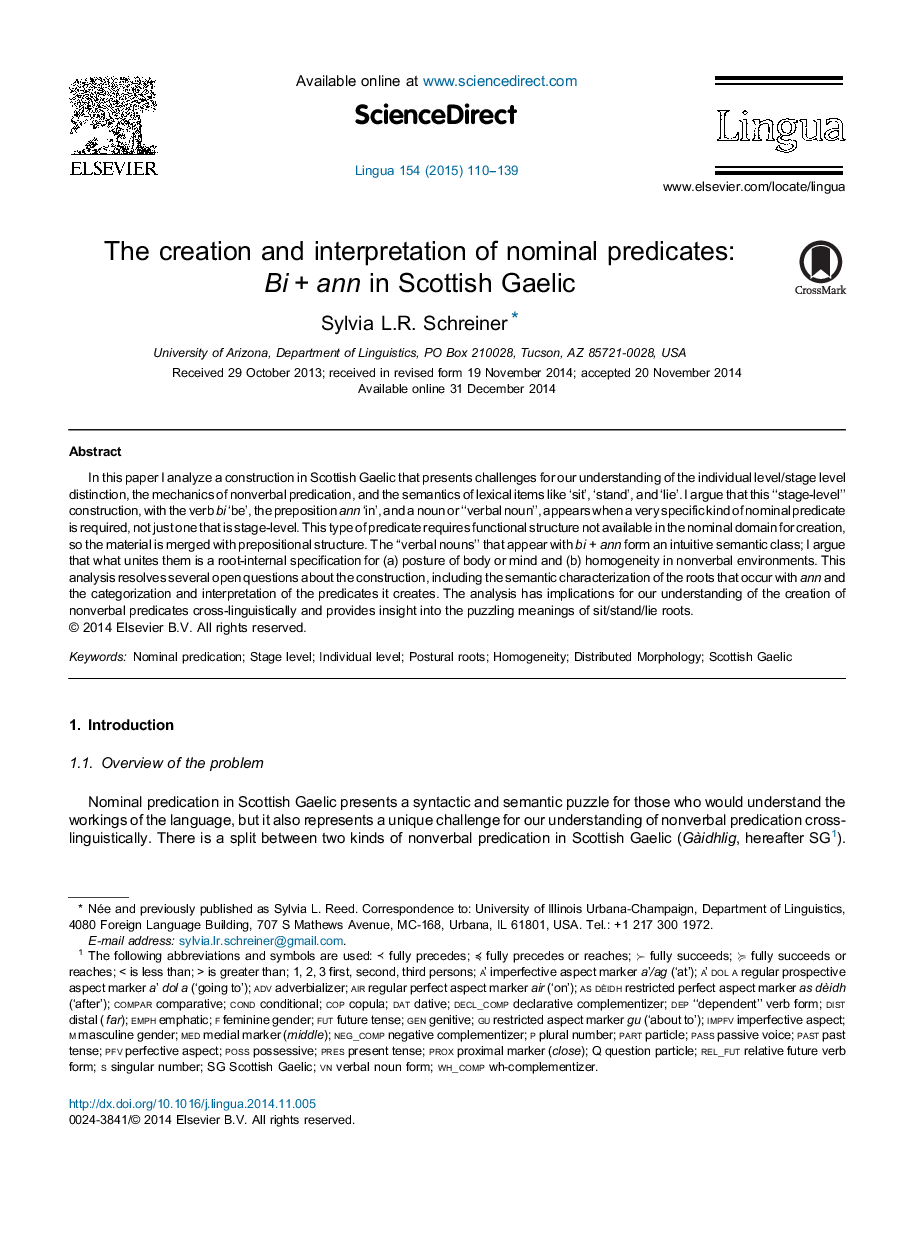| Article ID | Journal | Published Year | Pages | File Type |
|---|---|---|---|---|
| 935418 | Lingua | 2015 | 30 Pages |
•Scottish Gaelic nonverbal predication is not reducible to stage vs individual-level.•SG nominal predication with bi ‘be’ and ann ‘in’ yields only dense predicates.•The “verbal nouns” that participate in the construction are syntactically nominal.•The verbal noun roots are specified as postural and homogeneous.•Homogeneity is a property of roots; density is a property of functional structure.
In this paper I analyze a construction in Scottish Gaelic that presents challenges for our understanding of the individual level/stage level distinction, the mechanics of nonverbal predication, and the semantics of lexical items like ‘sit’, ‘stand’, and ‘lie’. I argue that this “stage-level” construction, with the verb bi ‘be’, the preposition ann ‘in’, and a noun or “verbal noun”, appears when a very specific kind of nominal predicate is required, not just one that is stage-level. This type of predicate requires functional structure not available in the nominal domain for creation, so the material is merged with prepositional structure. The “verbal nouns” that appear with bi + ann form an intuitive semantic class; I argue that what unites them is a root-internal specification for (a) posture of body or mind and (b) homogeneity in nonverbal environments. This analysis resolves several open questions about the construction, including the semantic characterization of the roots that occur with ann and the categorization and interpretation of the predicates it creates. The analysis has implications for our understanding of the creation of nonverbal predicates cross-linguistically and provides insight into the puzzling meanings of sit/stand/lie roots.
